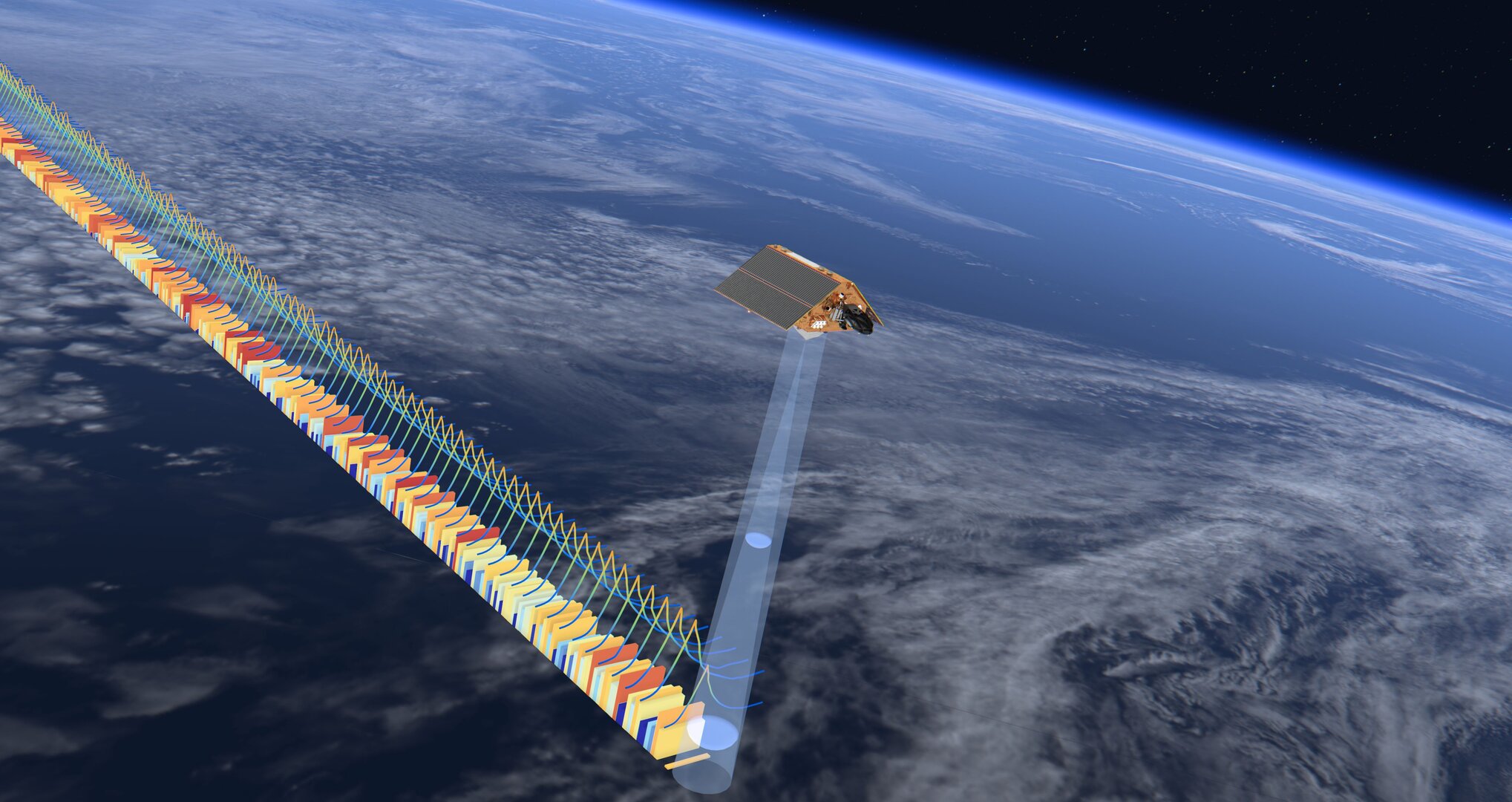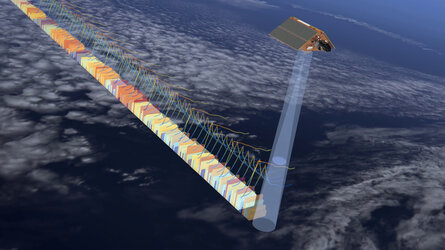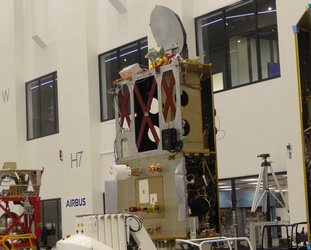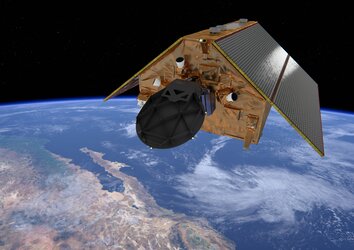Accept all cookies Accept only essential cookies See our Cookie Notice

About ESA
The European Space Agency (ESA) is Europe’s gateway to space. Its mission is to shape the development of Europe’s space capability and ensure that investment in space continues to deliver benefits to the citizens of Europe and the world.
Highlights
ESA - United space in Europe
This is ESA ESA facts Member States & Cooperating States Funding Director General Top management For Member State Delegations European vision European Space Policy ESA & EU Space Councils Responsibility & Sustainability Annual Report Calendar of meetings Corporate newsEstablishments & sites
ESA Headquarters ESA ESTEC ESA ESOC ESA ESRIN ESA EAC ESA ESAC Europe's Spaceport ESA ESEC ESA ECSAT Brussels Office Washington OfficeWorking with ESA
Business with ESA ESA Commercialisation Gateway Law at ESA Careers Cyber resilience at ESA IT at ESA Newsroom Partnerships Merchandising Licence Education Open Space Innovation Platform Integrity and Reporting Administrative Tribunal Health and SafetyMore about ESA
History ESA Historical Archives Exhibitions Publications Art & Culture ESA Merchandise Kids Diversity ESA Brand CentreLatest
Space in Member States
Find out more about space activities in our 23 Member States, and understand how ESA works together with their national agencies, institutions and organisations.
Science & Exploration
Exploring our Solar System and unlocking the secrets of the Universe
Go to topicAstronauts
Missions
Juice Euclid Webb Solar Orbiter BepiColombo Gaia ExoMars Cheops Exoplanet missions More missionsActivities
International Space Station Orion service module Gateway Concordia Caves & Pangaea BenefitsLatest
Space Safety
Protecting life and infrastructure on Earth and in orbit
Go to topicAsteroids
Asteroids and Planetary Defence Asteroid danger explained Flyeye telescope: asteroid detection Hera mission: asteroid deflection Near-Earth Object Coordination CentreSpace junk
About space debris Space debris by the numbers Space Environment Report In space refuelling, refurbishing and removingSafety from space
Clean Space ecodesign Zero Debris Technologies Space for Earth Supporting Sustainable DevelopmentLatest
Applications
Using space to benefit citizens and meet future challenges on Earth
Go to topicObserving the Earth
Observing the Earth Future EO Copernicus Meteorology Space for our climate Satellite missionsCommercialisation
ESA Commercialisation Gateway Open Space Innovation Platform Business Incubation ESA Space SolutionsLatest
Enabling & Support
Making space accessible and developing the technologies for the future
Go to topicBuilding missions
Space Engineering and Technology Test centre Laboratories Concurrent Design Facility Preparing for the future Shaping the Future Discovery and Preparation Advanced Concepts TeamSpace transportation
Space Transportation Ariane Vega Space Rider Future space transportation Boost! Europe's Spaceport Launches from Europe's Spaceport from 2012Latest

Copernicus Sentinel-6 radar altimeter
Thank you for liking
You have already liked this page, you can only like it once!
The Copernicus Sentinel-6 Poseidon-4 dual-frequency (C- and Ku-band) radar altimeter uses an innovative interleaved mode that has improved performance compared to previous satellite altimeter designs.
A radar altimeter derives the height of the satellite above Earth by accurately and precisely measuring the time it takes for a transmitted radar pulse to reflect Earth’s surface. The returned echo pulse from the sea surface provides a waveform that is processed to determine sea-surface height (from the radar range), the significant wave height (from the slope of the waveform leading edge) and the surface wind speed from the ocean roughness (determined from the strength of the power returns).
Sentinel-6 uses radar pulses that are transmitted and received using a timing arrangement that allows both conventional ‘pulse-limited’ (low-resolution mode) data to be acquired simultaneously with high-resolution ‘delay-Doppler’ measurements.
This arrangement allows unfocussed synthetic aperture radar (SAR) data processing to be performed where the altimeter synthesises a large antenna as it flies forward by exploiting the Doppler characteristics of the return echoes.
The processor then steers synthetic azimuth beams to specific locations on Earth’s surface to build a ‘stack’ of waveforms that can be processed to achieve better performance. Unfocussed SAR processing improves the precision of sea-surface measurements by averaging the stack of waveforms to reduce noise and improves the along track resolution from several kilometres to about 300 meters. SAR processing requires a much larger amount of data than conventional altimetry and the satellite implements a dedicated onboard processor to reduce the data rate that will be sent back to ground by a factor of two.
The unique capability of the Copernicus Sentinel-6 Poseidon-4 altimeter is designed to ensure enhanced continuity with the long time series of measurements from the Topex Poseidon and Jason series of satellite altimeters.
-
CREDIT
ESA/ATG medialab -
LICENCE
ESA Standard Licence and Additional permission may be required
(contact spaceinimages@esa.int for further information)

Copernicus Sentinel-6 in action

Copernicus Sentinel-6 with radiometer

Inside Copernicus Sentinel-6

Sentinel-6B in the IABG cleanroom















 Germany
Germany
 Austria
Austria
 Belgium
Belgium
 Denmark
Denmark
 Spain
Spain
 Estonia
Estonia
 Finland
Finland
 France
France
 Greece
Greece
 Hungary
Hungary
 Ireland
Ireland
 Italy
Italy
 Luxembourg
Luxembourg
 Norway
Norway
 The Netherlands
The Netherlands
 Poland
Poland
 Portugal
Portugal
 Czechia
Czechia
 Romania
Romania
 United Kingdom
United Kingdom
 Slovenia
Slovenia
 Sweden
Sweden
 Switzerland
Switzerland

























